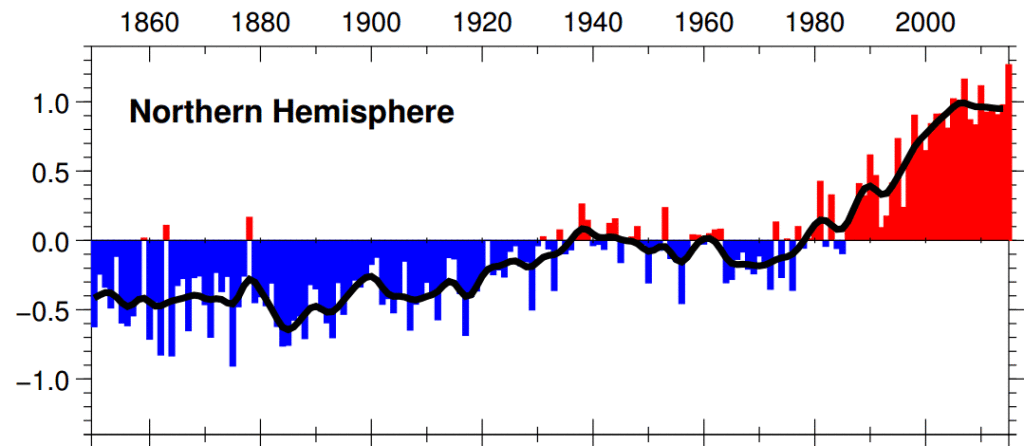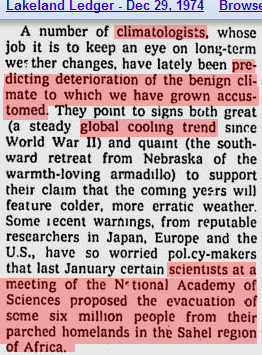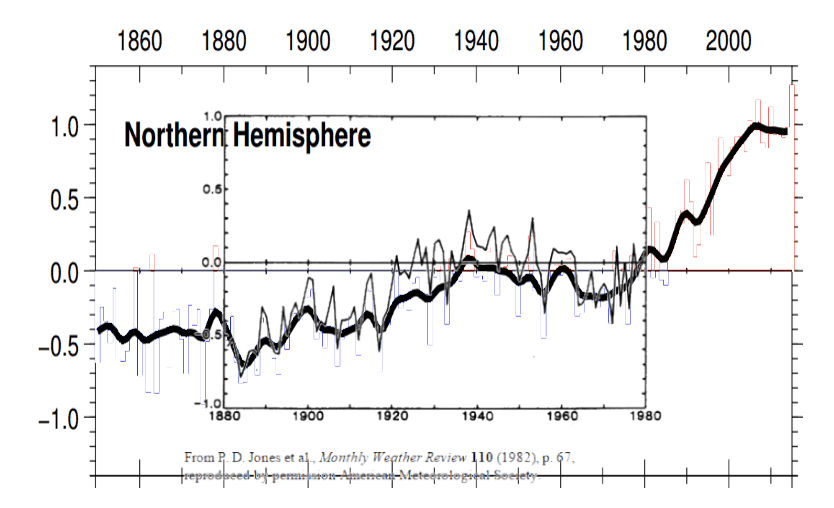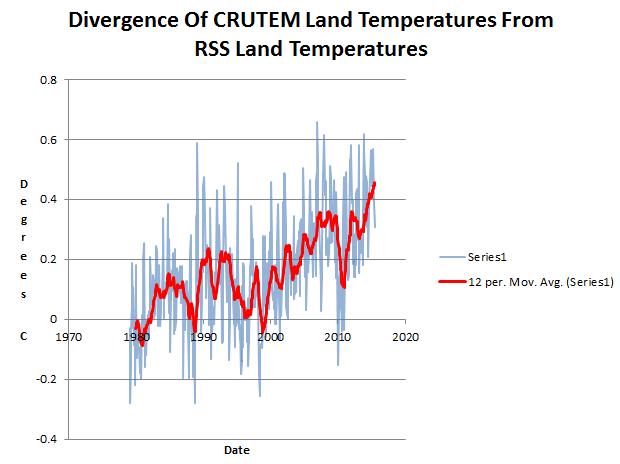Phil Jones used to show 0.5C Northern Hemisphere cooling from 1940 to 1975.
But he has since erased almost all of that.
This removal of the 1940’s blip was premeditated fraud
From: Tom Wigley <[email protected]>
To: Phil Jones <[email protected]> Subject: 1940s
Date: Sun, 27 Sep 2009 23:25:38 -0600
Cc: Ben Santer <[email protected]>It would be good to remove at least part of the 1940s blip, but we are still left with “why the blip”.
There was never any doubt that Earth cooled after 1940.
The next graphic shows the data tampering that was done, normalized to 1880.
But it is much worse than it seems. Phil Jones hockey stick begins in 1979, and diverges from satellite temperatures by 0.5C . He is showing twice as a much land warming as actually occurred.
After exaggerating temperatures by 0.5C, Jones then claims record warmth by 0.02 C. No mention of uncertainty or the divergence from satellite temperatures.
Science fraud doesn’t get any worse than this.








Many of your comparison graphs will be used in the upcoming Federal Trials of Scientific Fraud.
Good work.
Fill Jones.
Drs Jones and Hansen are pumping up the thermometer with a recent interview in the Guardian:
http://www.independent.co.uk/environment/climate-change/climate-change-2015-will-be-the-hottest-year-on-record-by-a-mile-experts-say-10477138.html
It’s clear that the scamsters strategy now is to focus on the newly faked up ocean temperature data:
““What’s important is not so much the land but the ocean data. The oceans have really picked up in the last 12 months or so,” Professor Jones said.”
Right now, these frauds are hoping and praying for a “permanent El Nino”.
Your point stands, but Jones was talking about SSTs.
Plus 1979 is a huge cherry picked year to start their charts, after 40 years of cooling.
Anyone who believes their 0.02 degree accuracy is simply gullible beyond belief – stupid ! Nuff Said.
Reblogged this on Climate Collections and commented:
Heller demonstrates that the University of East Anglia’s Phil Jones conspired with the University Center for Atmospheric Research on altering historical data. More data creep.